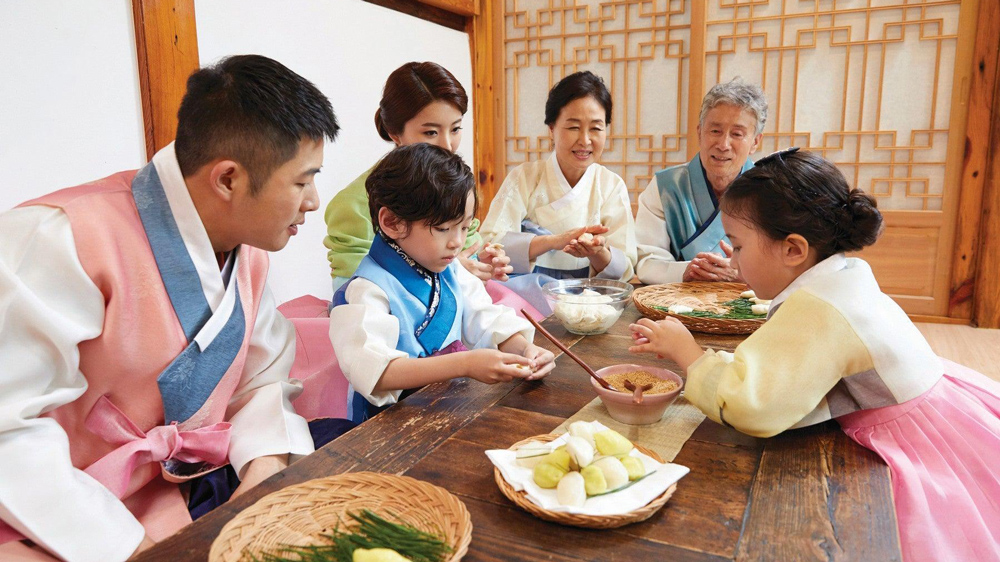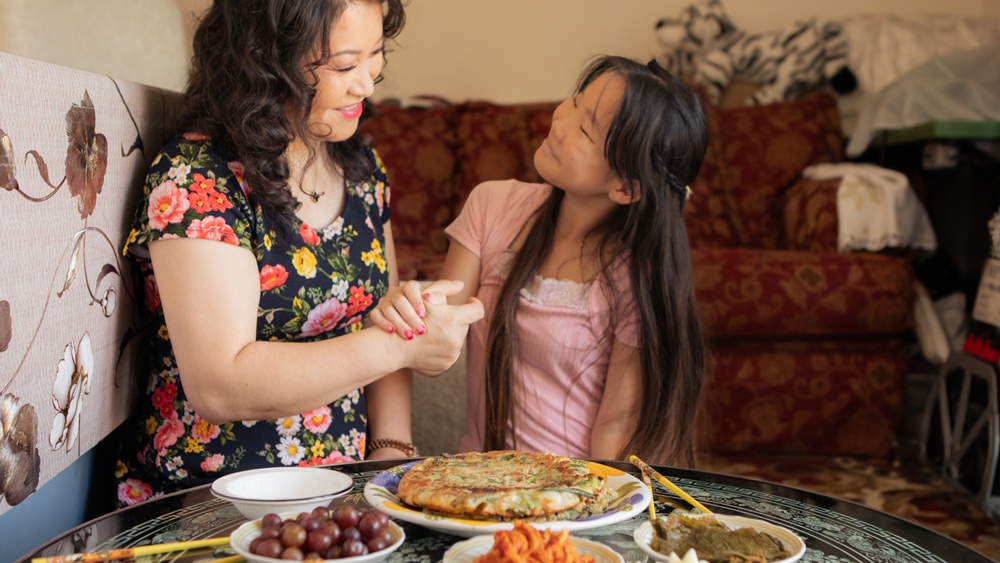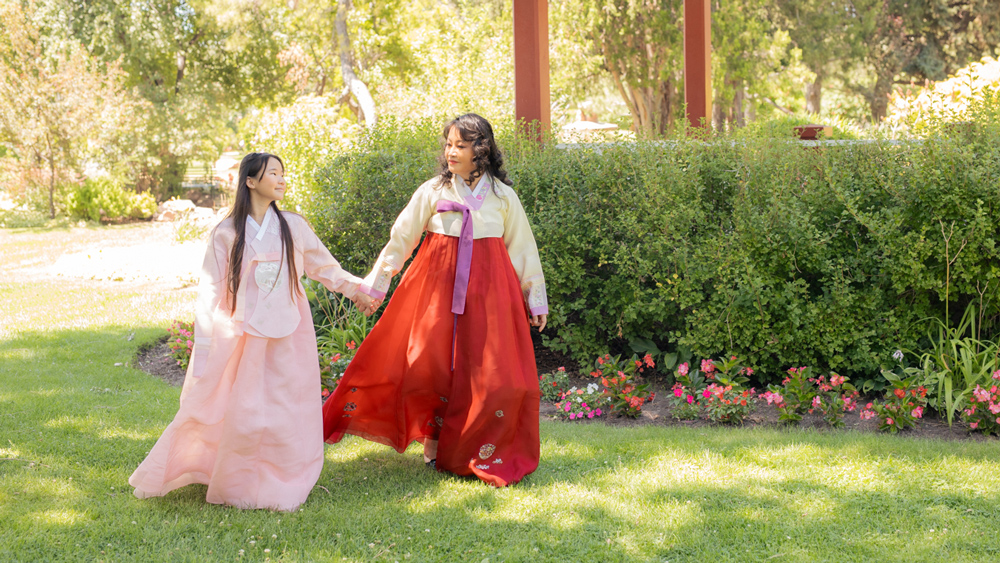Women’s History Month | Korean Freedom Fighter Yu Gwan-sun
March 1st marks the beginning of Women’s History Month, an opportunity to celebrate the contributions women have made to culture and society through the ages.
For Koreans, it’s also the anniversary of the March 1st Movement, or Sam-il (3-1) Undong. On this day in 1919, Koreans across the peninsula took a stand against Japanese colonial occupation. As peaceful protesters called for independence, an unlikely leader and activist emerged in 16 year old Yu Gwan-sun. As we honor her bravery as a symbol of Korea’s collective fight for freedom, we’re reminded of the North Korean women who are still fighting for free and full lives today.

The Korean Independence Movement
The Sam-il movement began with a declaration of independence issued by thirty-three Korean cultural and religious leaders - many of whom were young adults. In the face of great risk, they laid out a Korean vision of equality, internationalism, human happiness and world peace that is still relevant today. These daring words galvanized the nation, and peaceful protests erupted across the country over the coming weeks, with peasants, tradespeople, housewives, and scholars marching alongside one another. An estimated 2 million Koreans participated in these first public displays of resistance, fostering a sense of national unity; an awareness that each individual was not alone in their desire for freedom.
Ordinary Korean women played a crucial role in the grassroots movement. While traditional Confucian culture and Japanese education policy relegated women to the domestic sphere, they emerged as leaders in the demonstrations following March 1st. Along with freedom for their country, they sought social awakening and an improvement in the status of women.

Canadian journalist Frederick Arthur Mckenzie, who was working as a correspondent in Korea at the time, witnessed the historic culture shift. In his book, Korea’s Fight for Freedom, he recalls how “Female students were most active in Seoul. For instance, most of the people arrested in the morning of the 5th of March were girl students.”
Freedom Fighter Yu Gwan-sun
Yu Gwan-sun was one such student, a brilliant 16-year-old girl who attended Ewha Hakdang. There, she witnessed the beginnings of the Sam-il Movement and took part in the initial protests in Seoul. Yu and her classmates were detained by Japanese authorities, but missionaries from their school were able to negotiate their release.

Following March 1st, schools were shut down in an attempt to stop students and activists from coordinating further protests. Yu returned to her hometown of Cheonan, but her conviction for a free Korea did not waver. She smuggled a copy of the declaration of independence and went from village to village, spreading word about the Sam-il Movement. On March 31st, Yu climbed to the top of Mount Maebong and lit a beacon fire, signaling to protestors that the time had come to make their stand.
The next day, 3,000 people gathered at Aunae marketplace in Cheonan shouting “Mansei!” and “Long live Korean independence!” Yu distributed homemade taegukgi, or Korean national flags, while rallying the villagers. When Japanese military police arrived to shut down the protest, they fired into the crowd and killed 19 people, including Yu’s parents.

The Sam-il Movement was eventually suppressed by Japanese authorities in mid-April. According to The Bloody History of the Korean Independence Movement by Park Eun-sik, there were an estimated 7,500 deaths, 16,000 injuries, and 46,000 arrests.
Yu Gwan-sun was arrested and convicted of sedition. She was sent to Seodaemun Prison but even then, she did not give up the fight for freedom. While incarcerated, she famously wrote:
“Even if my fingernails are torn out, my nose and ears are ripped apart, and my legs and arms are crushed, this physical pain does not compare to the pain of losing my nation. My only remorse is not being able to do more than dedicating my life to my country.”
On the one year anniversary of the Sam-il Movement, Yu organized a large-scale protest with her fellow inmates. They were brutally beaten and tortured for their defiance, and she was
transferred to an isolated underground cell. On September 28th, 1920, at the age of 17, Yu died from the injuries she suffered.

Yu never experienced a free Korea, yet she audaciously fought to see a different future in her lifetime. Twenty-five years after her passing, in August of 1945, Korea finally gained its independence from colonialism, but at the same time was split into North and South Korea. Today, Yu is remembered as Korea’s “Joan of Arc,” and the Sam-il Movement is celebrated annually as a national holiday in South Korea.
North Korea’s Fight For Freedom
As we honor the bravery of Yu Gwan-sun and other women in history, we’re also reminded of the millions of North Koreans still fighting for free and full lives. They’re engaging in everyday acts of resistance and transforming their country from the ground-up.
In North Korea, women are also the ones driving crucial engines of change. Grassroots market activity at the Jangmadang is primarily driven by women, shifting economic power away from the regime and into the hands of the people. Women are smuggling goods across the border, testing the limits of self-expression through fashion and beauty, and becoming breadwinners for their families. From outside of the country, resettled North Korean women are accelerating change as activists and entrepreneurs, sending money and information back home.
While North Korean women still face many obstacles and human rights abuses, they’re challenging the status quo and striving towards freedom.

Liberty in North Korea
LiNK is helping North Korean refugees to reach freedom, begin new lives, and become agents of change on this issue. We’re so excited and grateful to announce that 8 North Korean women have recently reached freedom through LiNK’s rescue routes!
During the three years of heightened surveillance and lockdowns in China, our field team has worked tirelessly to establish new routes and expand our network. We’re excited to finally gain momentum in this area of our rescue work!

Like Yu Gwan-sun, these North Korean women never gave up in their pursuit of freedom. Many of them had crossed the North Korean border into China years ago, but were unable to complete the journey during the pandemic. Now they’ll be able to take full authorship of their lives.
“I tried multiple times to escape China but ended up getting caught and spending time in a Chinese prison. When I left home this time, I knew it would be my last attempt to reach freedom. If I failed, I had planned to drink pesticide and kill myself - if I were caught it would do so much harm to my family in China and even in North Korea. This time with the help of LiNK, I successfully made it to safety. I threw away the pesticide after the journey. I risked my life to come here, and I will live in freedom to the fullest.”
- Yi Hyun, reached freedom through LiNK’s networks in 2023
Thank you for making this possible with your steadfast support, especially through a tumultuous past few years. North Koreans have not given up, and they will not until they achieve their freedom. We can stand with them as they change history.
Fundraise or donate to help rescue more North Korean refugees today!
Chuseok for North Koreans | No Way Home for the Holidays
Autumn is a significant season for many people and cultures around the world. It’s a period of transition and reflection, gratitude for the days gone by, and celebration of the harvest.
In both North and South Korea, this time of year is celebrated with Chuseok, or the mid-autumn festival. Also known as “Korean Thanksgiving,” it’s a major holiday that predates the division of the peninsula. Chuseok is observed on the 15th day of the 8th month of the lunar calendar, when the harvest moon shines brightest. Traditionally, people return to their ancestral hometowns to gather with family, share a variety of delicious foods, and pay respects to their ancestors.
But for North Korean refugees, there is no going back. Holidays like Chuseok can be a bittersweet time, one of both gratitude for a life in freedom and grief over being unable to celebrate with family still inside North Korea.
“The first Chuseok in the US felt very empty and lonely. It was just me and my two-year-old daughter, Mia, back then. It didn’t feel like a holiday. I had multiple emotions at the same time. Loneliness, emptiness… there were so many feelings that I couldn’t even put into words.“
– Holly, escaped North Korea in 2013
Chuseok celebrations have evolved to look a little different in North versus South Korea, and even in countries like the US where the Korean diaspora have resettled.

Chuseok Traditions in South Korea
In South Korea, Chuseok is considered the largest and most important holiday of the year. It’s celebrated over three days, during which a “national migration” takes place as people all over the country travel to their hometowns or to go sightseeing. Tickets for planes, trains, and buses are sold out months in advance, and freeways are packed with bumper-to-bumper traffic during the holiday period.
On the morning of Chuseok, families hold a memorial service for their ancestors at home, known as charye (차례). A table of food is prepared as an offering, typically featuring rice cakes, fresh fruits and vegetables, meat dishes, and the favorite meals of deceased loved ones. Families will also visit ancestral gravesites, a custom known as seongmyo (성묘), to pay their respects and tend to the graves.

From the ancestral table to large family meals, food is a central part of Chuseok celebrations. The defining dish of this holiday is seongpyeon (송편), a chewy, sweet, and nutty half-moon shaped rice cake steamed in fresh pine needles. It’s traditionally made with rice from the year’s harvest, finely milled into flour. Preparing seongpyon becomes a family activity as each piece is shaped by hand and filled with red bean paste, toasted sesame seeds, or chestnuts.
Other holiday foods include pajeon(파전), a crispy, savory pancake made with green onions; galbijjim (갈비찜), sweet and savory braised short ribs; and japchae(잡채), glass noodles stir-fried with meat and vegetables.

How Chuseok is Celebrated in North Korea
In North Korea, Chuseok is just a one-day celebration. While it is considered a key traditional holiday, its importance has been minimized relative to national holidays like the birthdays of Kim Il-sung and Kim Jong-il, and the anniversary of the founding of the Worker’s Party.
On both traditional and national holidays, North Koreans are urged to visit the statues of Kim family leaders or the Kumsan Palace of the Sun in Pyongyang, where the bodies of Kim Il-sung and Kim Jong-il lie.
It is much less common for widespread travel to take place during Chuseok due to severe travel restrictions and poor transportation infrastructure. However, these constraints have also made it so that generations of North Koreans remain in close proximity to their hometowns and relatives. For Chuseok, people gather with their nearby family members. Just like in South Korea, they’ll prepare special foods as offerings for charye, and then visit ancestral grave sites to pay respects.
After ancestral rites, festivities become a community affair with traditional food and folk games shared amongst family, friends, and neighbors. Songpyeon is also a holiday staple, but the North Korean version is made with a minced meat and vegetable filling, and are twice as big as South Korean ones. Common folk games are yutnori (윷놀이), a board game, and ssireum (씨름), or Korean wrestling.
Holly & Mia: A Legacy of Freedom
It’s been over a decade since Holly left her hometown in North Korea. But whenever she makes pajeon (파전), it takes her right back to her childhood—sitting by the frying pan and watching her mom cook, eagerly awaiting a taste. “Pa”(파) means green onion and “jeon”(전) refers to foods that have been pan-fried or battered. There are many varieties of “jeon,” made with everything from potatoes to zucchini, seafood, kimchi, and more.
Holly saw her mom cook this dish countless times in North Korea. It was an inexpensive, everyday staple, but also an essential part of the holidays. Every year for Chuseok, the mouthwatering aroma of oil and batter would draw everyone to the kitchen, where a colorful assortment of jeon was being prepared.
Holly now lives halfway across the world from North Korea, but every year during Chuseok, she sets out an offering table for charye. For hours, she prepares foods like pajeon with great care, remembering and honoring her parents and loved ones, who she can’t be with for the holidays.

In 2016, Holly reached freedom through LiNK’s rescue networks with one-year-old Mia in her arms.
Mia is now at an age where she’s able to understand some of the things her mother went through. Holly has begun to open up more about her life in North Korea, and does her best to keep their small family connected to their Korean heritage. She takes Mia to Korean language school on Sundays, and makes an effort to celebrate cultural holidays, like Chuseok. What can’t be put into words, Holly communicates through food—their dinner table is always full of delicious Korean cooking.
In 2024, Holly received her US citizenship, nine years after her resettlement!
"When I obtained my US citizenship, it felt like my escape journey was finally complete. I cried and felt so grateful to the US for giving me a new life. My greatest happiness is seeing Mia have a childhood free of the painful hardships that defined mine.”

These days, Chuseok has become a lively gathering with the many friends and neighbors they’ve met over the years! Holly gathers with other Koreans in the community, and they go all-out preparing delicious seongpyeon and pajeon. She takes great pride in wearing traditional hanboks with Mia, and explaining each dish when guests arrive. The festivities always continue long after dinner, with Korean games like jegichagi, a version of hacky sack, and yutnori, a board game.
Living in the US, Holly and Mia have been introduced to new traditions too. Just a month after Chuseok, their community gathers again to celebrate Thanksgiving with turkey and pumpkin pie, in true American fashion.

Holly still has hope that in her lifetime, she’ll be able to celebrate Chuseok with all her family and bring Mia to visit her hometown in North Korea.
We’re working towards the day when families don’t have to be separated. To date, LiNK has rescued almost 1400 North Korean refugees and their children, reuniting over 500 people with their families in freedom. As we’re helping North Koreans, like Holly, build new lives, we’re also leading initiatives to increase change inside North Korea, through advocacy, information access, and more.
Become a monthly donor and create a long-lasting legacy of freedom. Your support will rescue North Korean refugees waiting for their chance to escape right now, and fuel work that is increasing change and opening inside North Korea.




